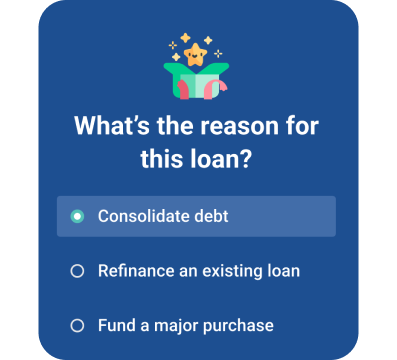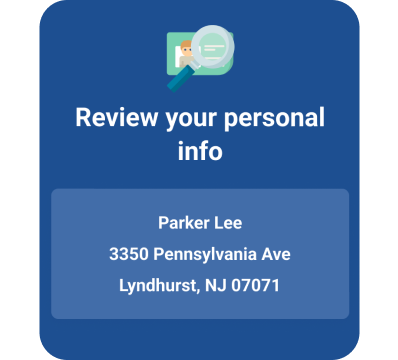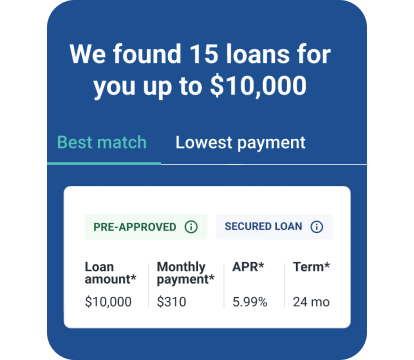In this article:
On the surface, cash advance apps and payday loans appear similar. But while they both offer easy access to cash and require quick repayment, cash advance apps tend to cost less, making them more appealing in the event that you're coming up short before payday.
Before you take out a short-term loan to cover necessary expenses, here's what to know about each option.
What Is a Payday Loan?
A payday loan is a short-term loan, typically between $50 and $1,000, that requires full repayment within 14 days, often by your next payday. Depending on where you live, payday loan limits can vary, and many states have banned them altogether due to their onerous restrictions and terms.
While payday loan finance charges may seem relatively small in dollar terms, the quick repayment typically results in a triple-digit annual percentage rate (APR). On average, payday loans charge a 400% APR or higher.
If a borrower can't repay the loan on time, some lenders allow them to roll it over into a new payday loan, which means another finance charge and more interest.
Even in states that require payday lenders to offer no-cost extended payment plans, the Consumer Financial Protection Bureau has found that some lenders have withheld necessary information about these plans, steering borrowers into costly rollover loans instead.
Find a Personal Loan Matched for You
What Is a Cash Advance App?
Cash advance apps, sometimes called early payday apps, are mobile apps and services that offer users cash advances, which are usually repaid on the borrower's next payday. Depending on the service, advances can range from $25 to $750, with higher amounts typically available only to repeat borrowers.
Many cash advance apps tout no interest or fees to receive an advance, but they may charge a fee for expedited delivery of the funds—standard delivery may take several days, which is unhelpful if you need money now. Others may charge a monthly fee in lieu of other added costs.
While these costs can add up to a high APR, they're generally much lower compared to payday loans.
Comparing Cash Advance Apps and Payday Loans
While cash advance apps function similarly to payday loans, they have key differences that make them more appealing.
Similarities Between Cash Advance Apps and Payday Loans
- No credit check required: You don't have to worry about getting denied due to bad credit. When you borrow money with a payday loan or cash advance app, your credit score won't come into play. At the same time, on-time payments won't be reported to the credit bureaus.
- Short repayment: In both cases, you typically need to repay the loan within a couple of weeks, often by your next payday.
- Small-dollar loans: Depending on where you live, you may be able to borrow more with a payday loan. But in many cases, you may only be able to get a few hundred dollars or less with either option.
- Repeat borrowing: It's common for both payday loan and cash advance app borrowers to take out consecutive loans. While cash advance apps are cheaper, they can still cause damage to your financial health if used frequently.
Differences Between Cash Advance Apps and Payday Loans
- Payday loans are more expensive: Cash advance apps can be expensive in terms of APR, even if you only pay a fee to get your money more quickly. However, the average APR for a payday loan is much higher, putting your financial well-being at more risk.
- Loan amounts: Advance limits among cash advance apps usually start out low, requiring you to use the service multiple times to get higher amounts. In contrast, you may be able to get up to your state's limit from the start with a payday loan.
- Funding time: You can usually walk into a payday loan store and walk out with your money upon approval. But if you sign up for a cash advance app, it can take several days to receive your funds unless you pay extra.
- Other features: Some cash advance apps offer other features that can help you improve your money management or even build your credit history.
Cash Advance App vs. Payday Loan: Which Is Better?
To be clear, both cash advance apps and payday loans can be expensive, so neither is an ideal form of borrowing. If you have the ability to get help from a friend or family member or you have access to financial assistance through government programs or from local organizations, you could save a lot of money. Even a credit card cash advance may come with a lower APR.
If you don't have any other options, however, and you don't anticipate needing to reborrow, cash advance apps are a better option because they tend to cost less, even with added fees. They can also provide you with resources to help improve your financial situation.
In the long run, it's important to seek other alternatives to ensure that you don't get caught in a vicious cycle of expensive short-term debt.
Build Your Credit to Improve Your Options
Payday loans and cash advance apps are appealing to consumers with less-than-stellar credit scores. But if you can improve your credit over time, you'll have access to financing options with lower interest rates, longer repayment terms and better features overall.
To start, check your credit score and credit report for free with Experian to get an idea of where you stand. Then, use your credit report to target areas where you can improve. You can also take advantage of credit-builder loans and credit cards for bad credit to build up a positive payment history.
The process of building your credit can take some time, but your efforts can help expand your financing options in the future.




